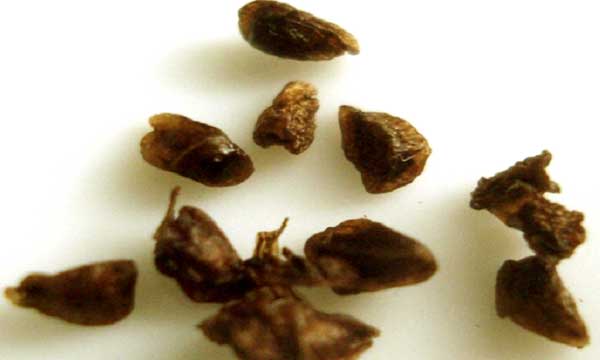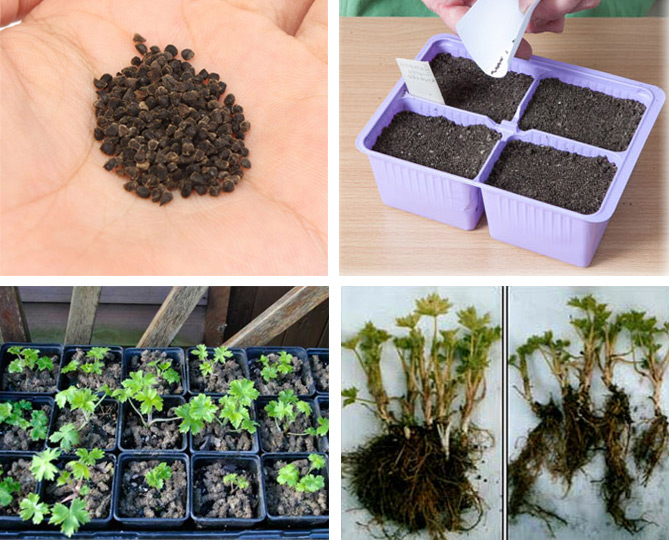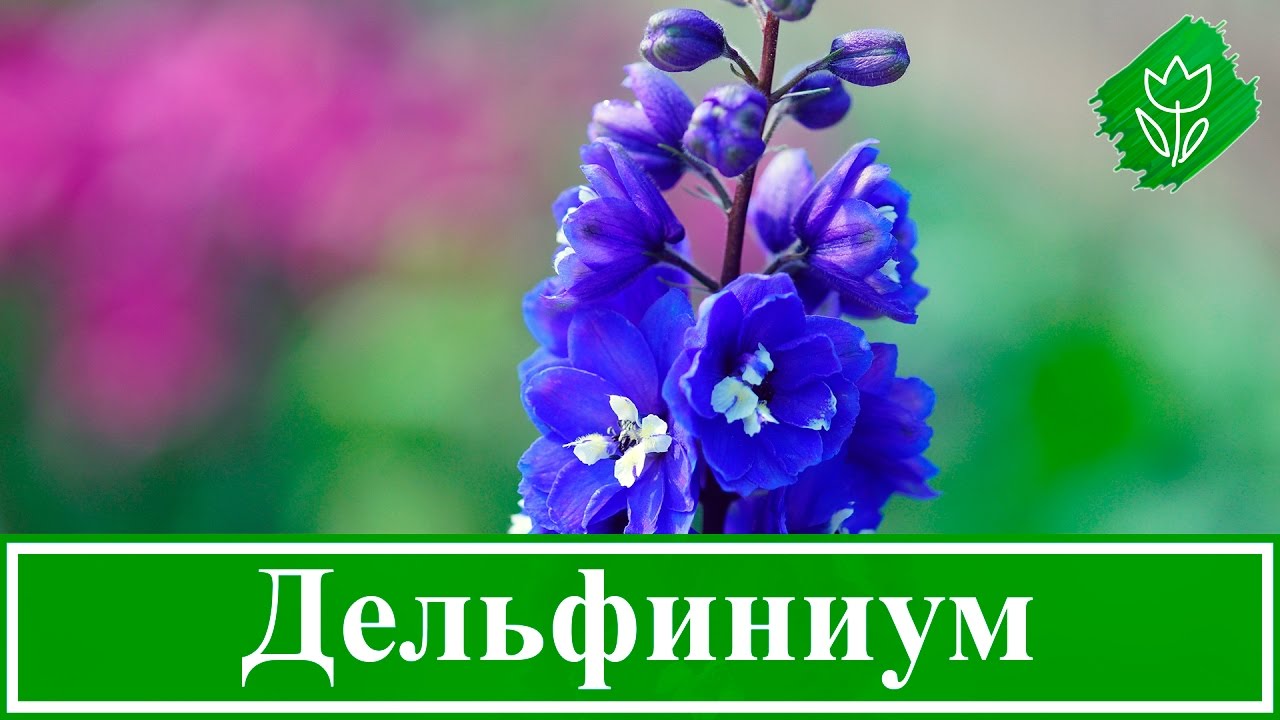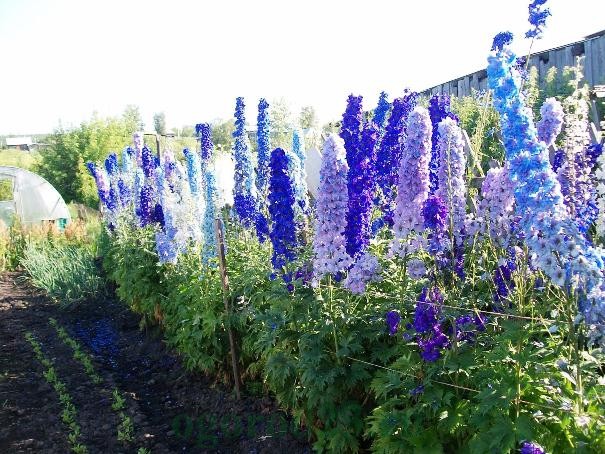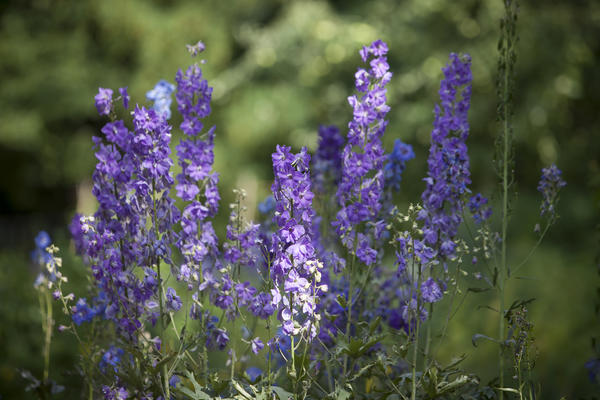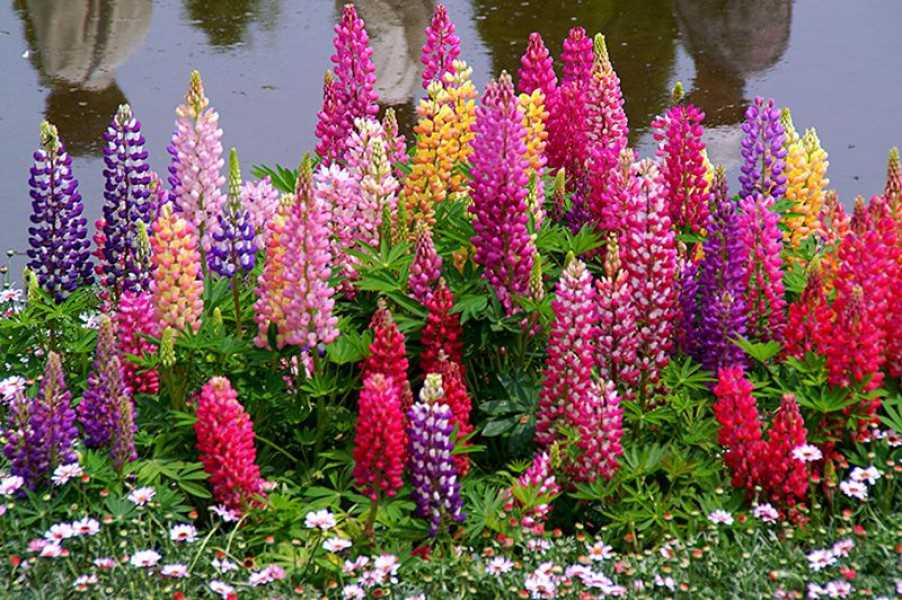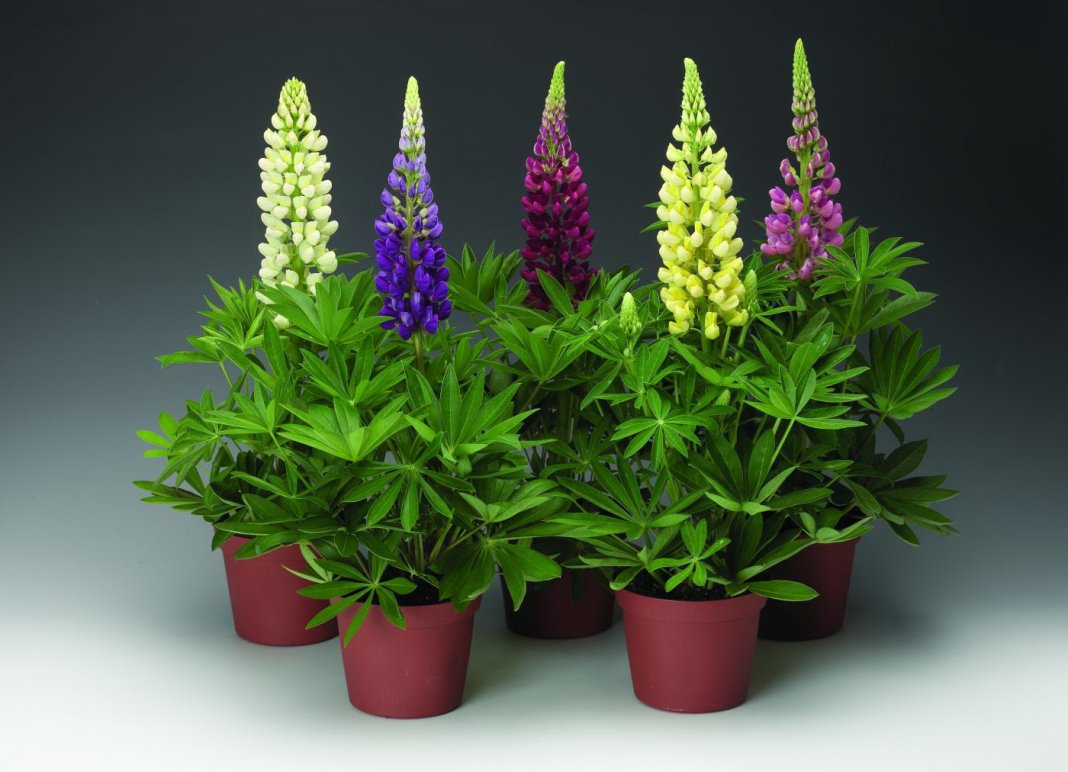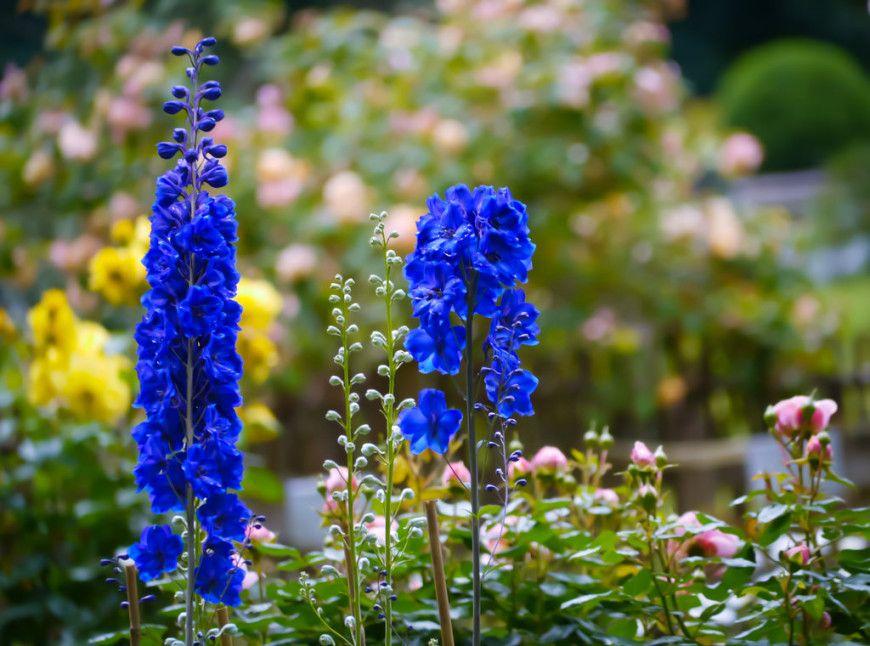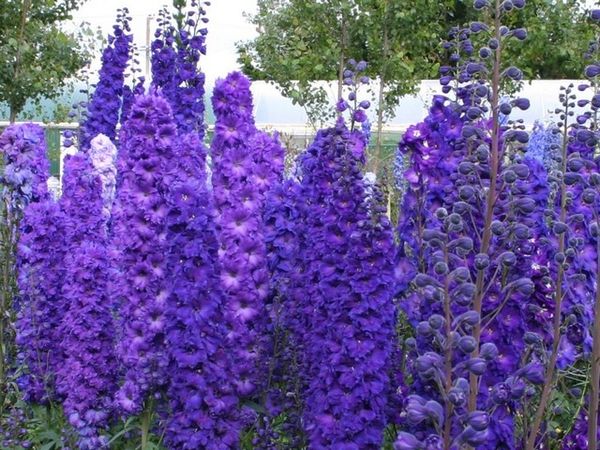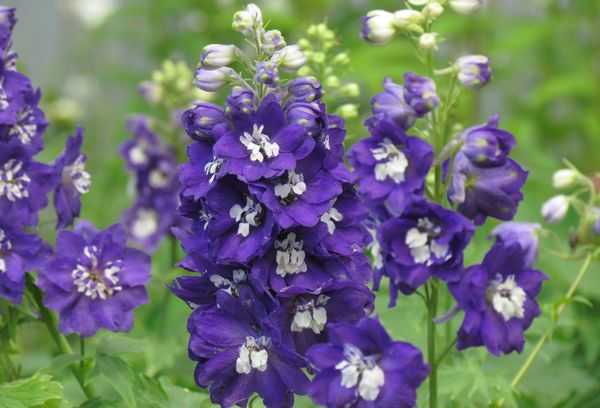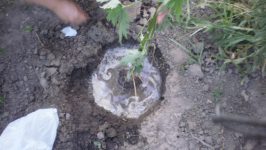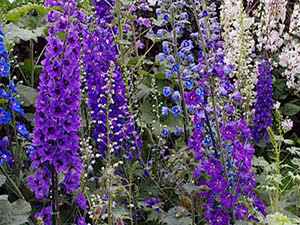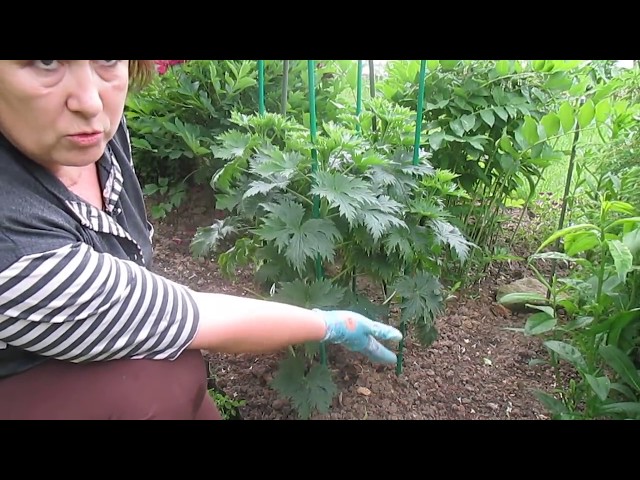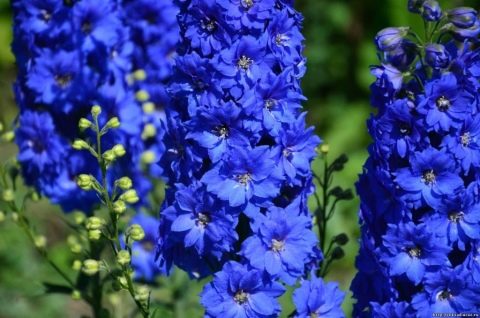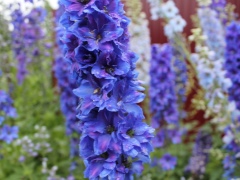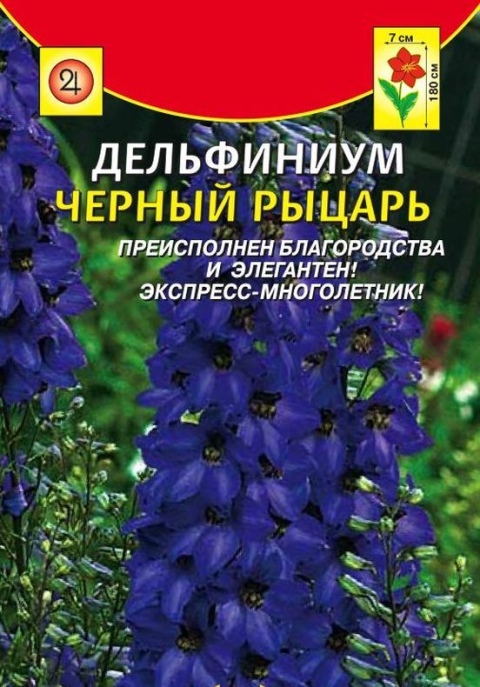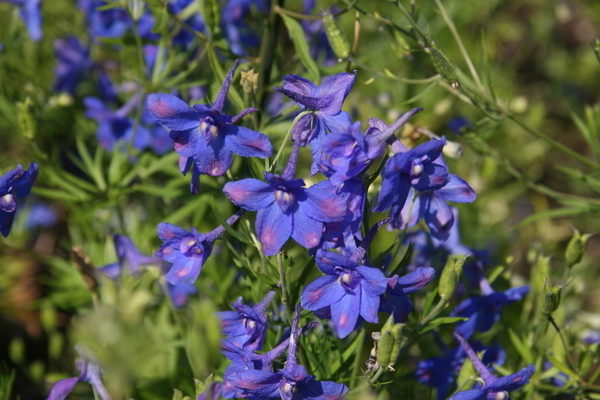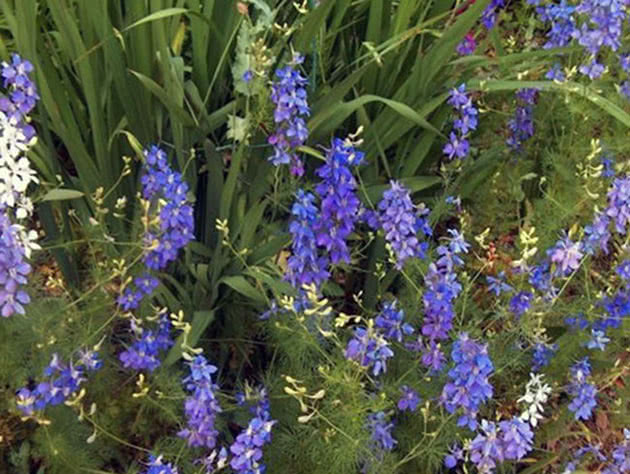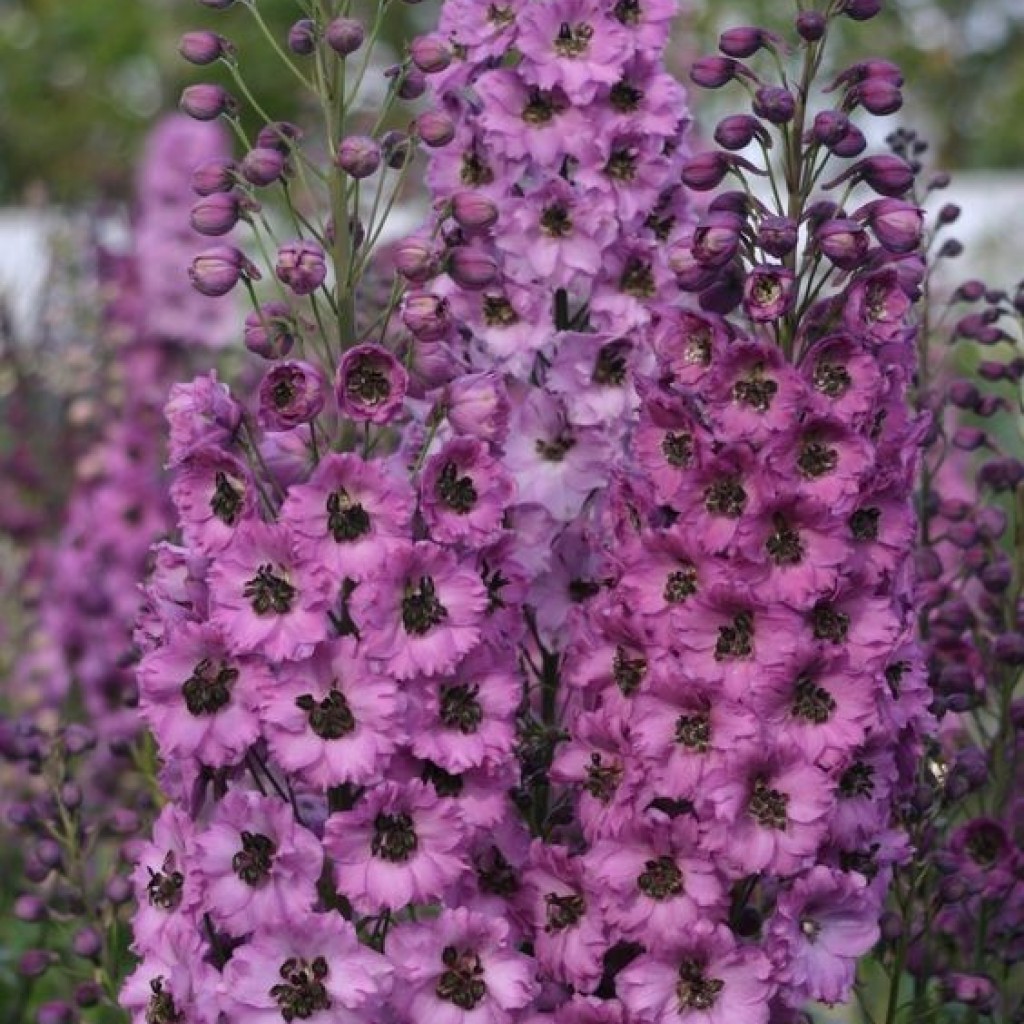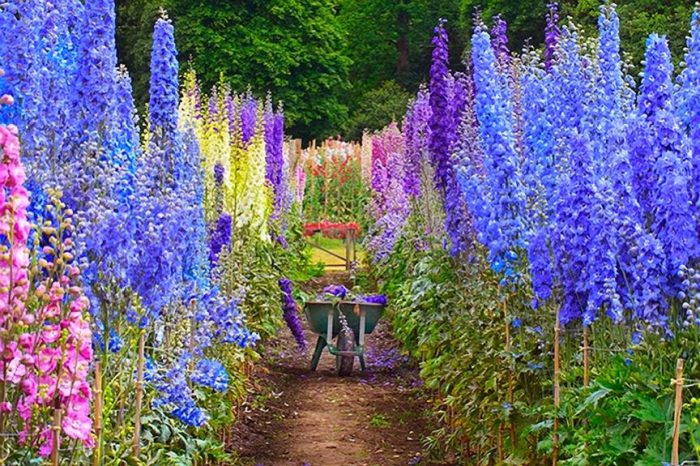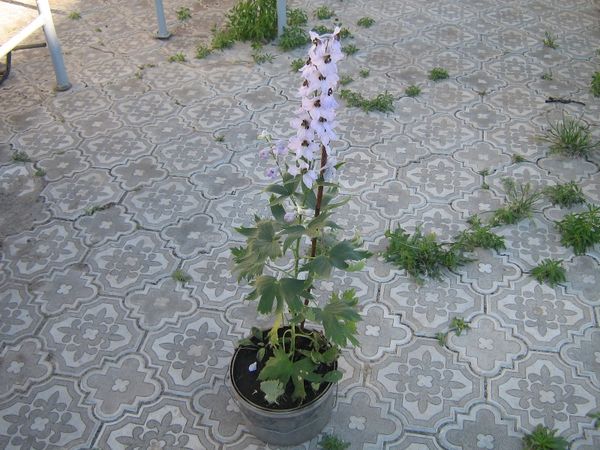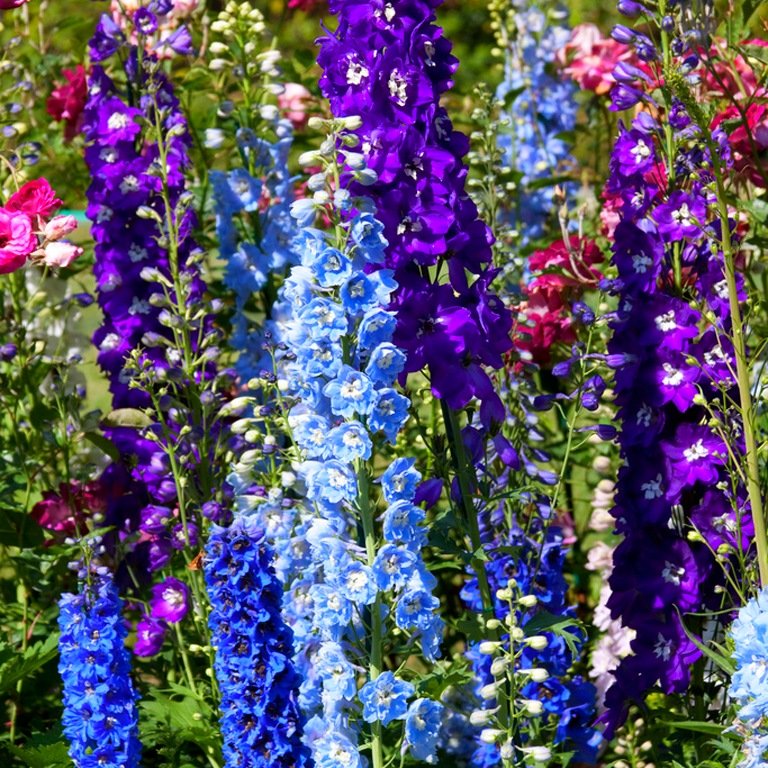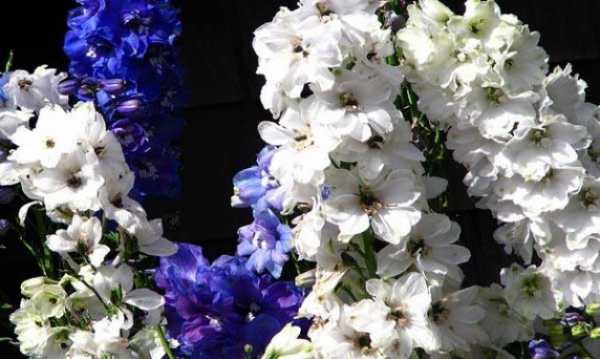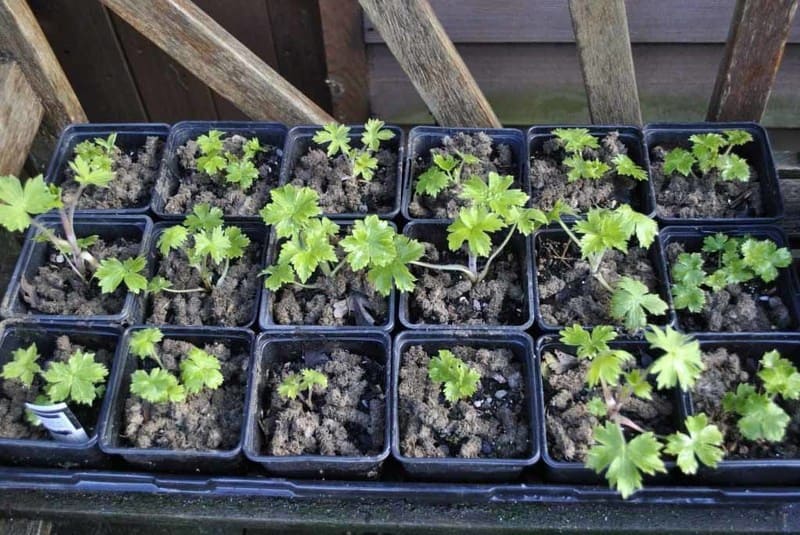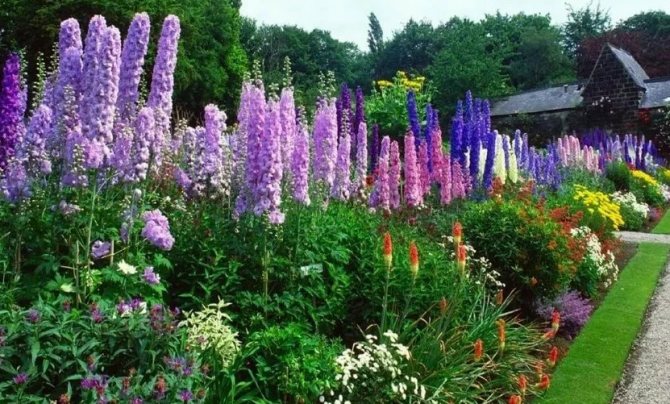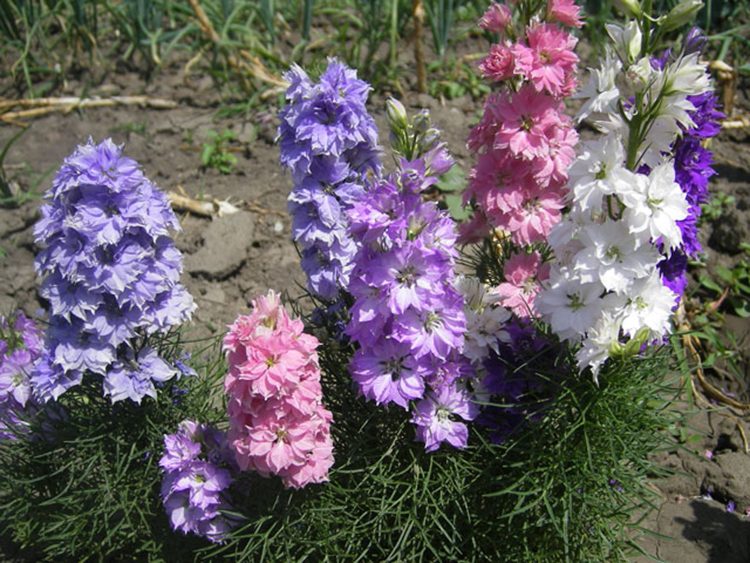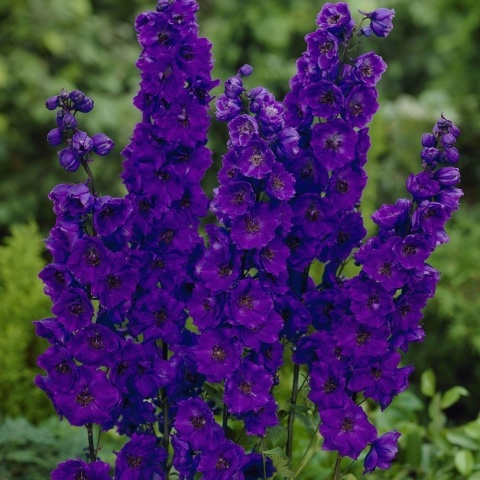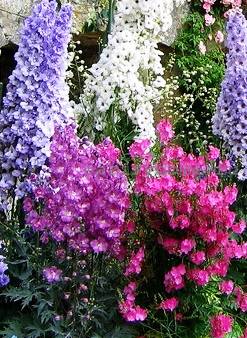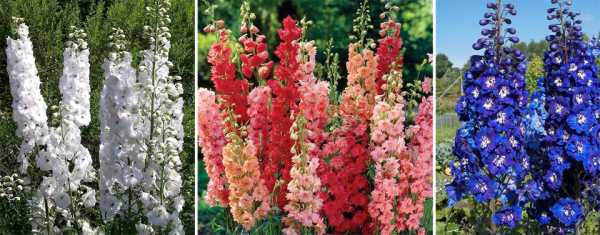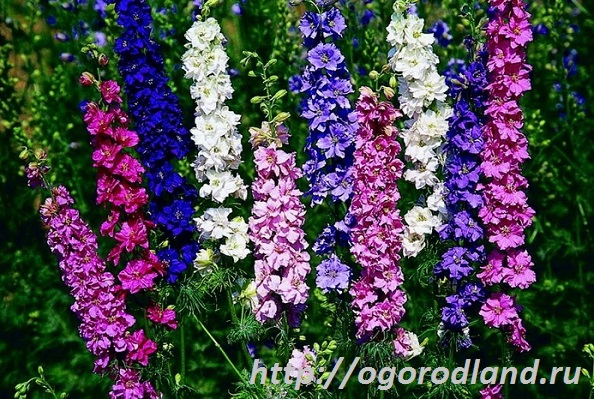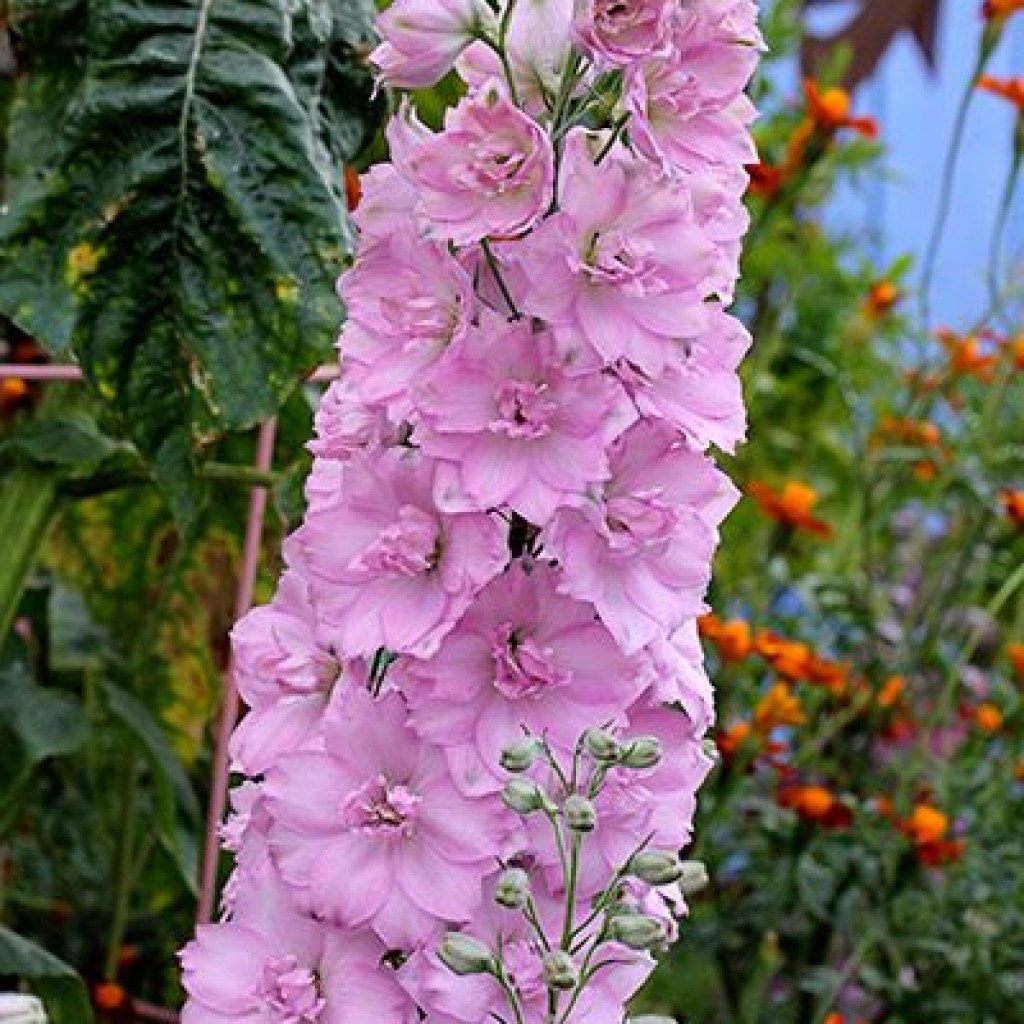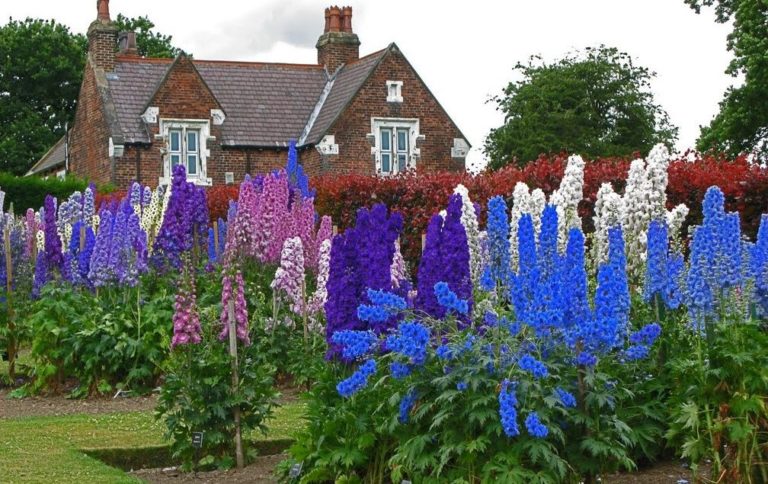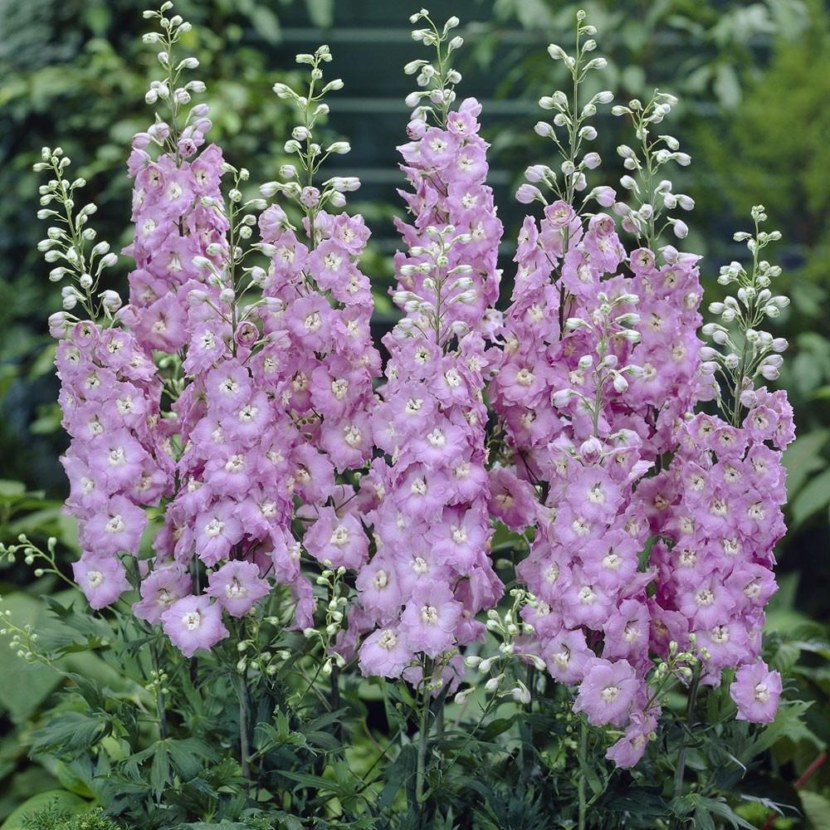Transplanting delphinium seedlings into open ground
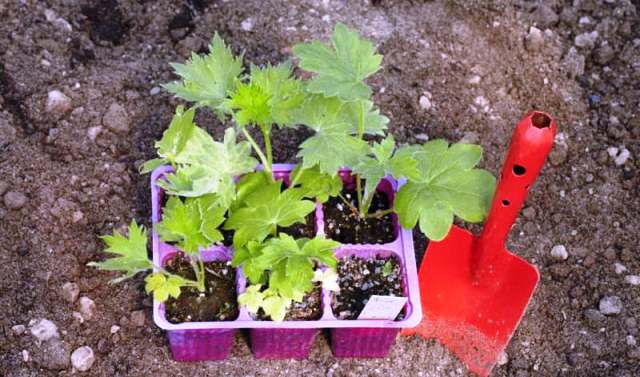
After waiting for the moment when the seedlings grow, the florist makes a long-awaited transplant in open ground. But in order for the garden event to go well and the plants take root, it is necessary to observe the planting dates, prepare the seedlings, choose the right place and transplant according to the correct scheme.
Preparing seedlings for planting (feeding and hardening)
Before planting in open ground, the delphinium seedlings should be prepared. Preparation includes feeding and hardening.
Top dressing of larkspur seedlings can be done using complex fertilizer 2 weeks before transplanting. For example, you can use the preparations Agricola, Gumistar, Solution, Fertika Lux. Top dressing must be root and must be combined with watering.
It is also important to carry out hardening, which will strengthen the seedlings and help the young spur to adapt to new outdoor conditions. You need to start hardening the plants about ten days before landings in open ground
For the first 3-4 days, open the window for fresh air. Then 3-4 days you need leave seedlings for four hours on a glazed balcony or loggia. Leave the plants in this area overnight before planting.
Site selection and preparation
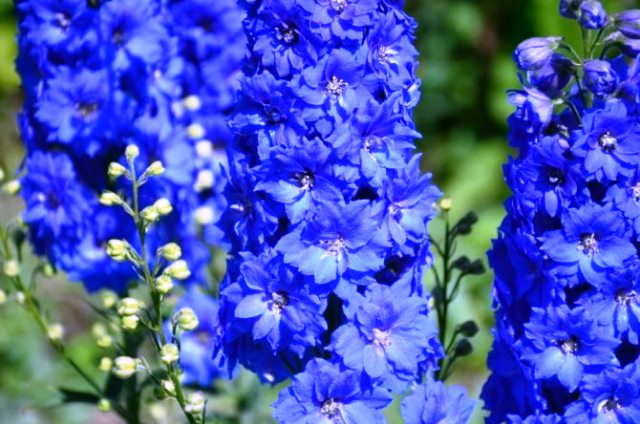
It is better to choose a place for planting delphinium seedlings based on the following recommendations:
- it is comfortable for a plant to grow in open areas that are well illuminated by the sun;
- at the same time, the place must be reliably protected from strong and cold winds (for example, next to a wall of a building or a fence);
- you should not choose lowlands for planting, in which moisture will stagnate;
- it is advisable to contrive and choose a sunny area where the flowers could be in the shade for a couple of hours a day;
- the flower likes neutral or slightly acidic, fertile soils, the best option is loose loam, fertilized with humus or compost.
In autumn, before disembarking delphinium seedlings in open ground, apply fertilizer to the soil. To do this, dig up the garden, making humus or compost - five kilograms per square meter.
Direct landing in open ground
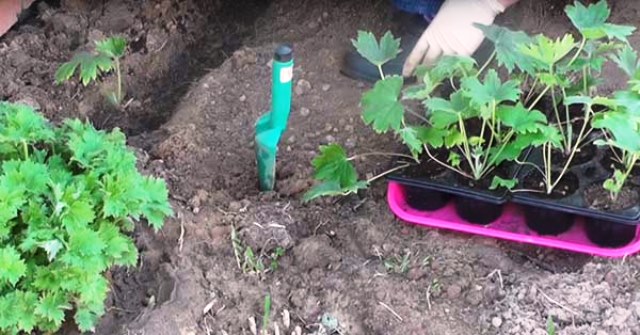
Planting delphinium seedlings in open ground is carried out according to the following scheme:
- To begin with, dig up the selected area, add a little peat, humus and sand and a handful of wood ash to the soil. Use a rake to level the bed.
- Then make planting holes 50 cm deep, 40 cm in diameter. They should be 40 centimeters apart.
- Mix the soil you got from digging holes with the compost in a 1: 1 ratio. Fill the wells 1/2 full and let sit for two days.
- Water the holes, plant seedlings in them using the transshipment method, after watering the seedlings. You need to deepen the plants to the point of growth of real leaves. Sprinkle with earth, carefully compact the planting sites and water.
Useful articles from the "Floral" section:
Useful articles for the gardener:
- Caring for trees and shrubs in the spring of 2020: how to care
- Boric acid for plants: application in the garden, vegetable garden and flower garden
- Pansies: planting dates, cultivation and care in the open field
- Fighting caterpillars in the garden and in the garden: how to get rid of, drugs
- Shallots: growing and care
- Mushroom picker calendar 2020: when to collect, auspicious days
- Autumn work in the garden and garden: what needs to be done
- Do I need to dig a garden before winter: timing, what fertilizers to apply
- Apricot compote for the winter: delicious and simple recipes
- How to get rid of aphids on indoor plants at home
4 Planting and care
Transplanting seedlings into open ground is permissible in the spring, when the ground warms up and the risk of short-term night frosts has passed. The agrotechnical sequence is as follows:
- Planting holes are dug to a depth of 50 cm and a diameter of 35–40 cm, with an interval of 60–70 cm.
- 2-3 liters of mullein, 30-40 g of complex fertilizer and a glass of wood ash are poured into each. Mix everything thoroughly so as not to burn the fragile roots of the seedlings.
- A deepening is made in the center and seedlings are installed. The free space is filled up and carefully compacted.
- Spill the garden plentifully.
For the first time, each bush is covered with a plastic cap. As soon as they take root and actively grow, the shelter is removed.
As soon as the seedlings reach a height of 15–20 cm, fertilizing is applied in the form of liquid cow dung. For 5 adult bushes, 5 liters of organic matter are bred for 10 buckets of water. They loosen, remove weeds and mulch with a layer of peat 3–5 cm thick. Thin when the plantings stretch to a height of 20–30 cm. No more than five strong peduncles are left on one bush, which further makes it possible to get lush and large inflorescences on the remaining ones. Underdeveloped shoots are cut to the very base, which will protect the entire bush from damage by possible diseases and improve air permeability.
The cuttings remaining after cutting, if they have a heel, are rooted. The bottom is treated with crushed coal and dripped in a peat-sand mixture, abundantly moistened and covered with a film. After 3–6 weeks, the cuttings take root. And after the next 2 weeks, they are ready for transplanting into open ground. This is the vegetative propagation of delphiniums by cuttings.
Growing seedlings eventually need a garter to support. The first fixation is done when the stems are stretched to 40-50 cm, the second time - upon reaching 120-130 cm. Taking into account a similar growth rate, the support rods are dug in longer, about 2 meters.
Delphiniums are fairly moisture-loving plants that require abundant watering. Throughout the growing season, they are able to drink up to 60 liters of water. If the weather is steadily hot, then once a week is poured under each bush 2-3 buckets each. After moistening, the ground must be plowed to a depth of at least 4–5 cm. In the heat, hollow inflorescences can form, therefore, abundant watering and top dressing with potassium-phosphorus fertilizers are shown. Dilute the fertilizing mixture at the rate of 20-25 g per bucket of water. For one landing, 1 liter of such a solution is enough.
At the end of flowering, the peduncles are cut off. Only under this condition do delphiniums bloom again in the fall. The interval between the first and second flowering is convenient for the division of old bushes at the age of 2-3 years. The overgrown plantings are carefully removed along with a lump of roots, divided into several parts with a sharp tool. At the same time, they try not to damage the living kidneys. The cut points are sprinkled with coal dust and seated separately. This is another variant of vegetative reproduction.
In autumn, all the old flower stalks are cut at the level of 30–40 cm from the ground. Since the stems are hollow, moisture can penetrate through them to the root collar and stimulate root decay. To prevent this from happening, the open cavity after cutting is covered with clay. Since the plant is frost-resistant, it is enough to throw spruce branches or any plant material on it. Flowers can perish irrevocably if there are sharp temperature jumps in winter and a large amount of snow falls.
Description
All descriptions mention that this plant looks like candles formed by a series of buds. Depending on the region of residence, there are different names, including "spur" and "larkspur". The popularity of culture is due to the fact that it endures even very cold times. The name "delphinium" is associated with the peculiarities of the ear - it looks like the head of a sea dolphin.And the word "spur" appeared because of the characteristic eyes inside the sepals.
Regardless of what the plant is called, everyone agrees that it is great for chilly winters. Moreover, even if the cool summer has come, the plant is guaranteed to reveal itself in all its beauty. This circumstance also makes the delphinium in demand among gardeners of the middle climatic zone of Russia.
In these regions, there are at least 90 varieties of delphinium. The time of his life is determined, first of all, by the actual weather. Depending on it, the same plants can live for 4 or 8 years. Simple buds of these flowers usually have 5 petals.
The spur occupies the middle. This combination makes the delphinium an excellent honey plant. The culture can be pollinated by bumblebees or small birds. The color of the flowers is varied. However, most species are decorated with blue or purple buds. The whiter the plant, the stronger the smell is usually.
Flowers are grouped in standing panicles. Their size is 3-10 cm. The foliage resembles a flower, since it is cut into lobes to the very base. All parts are sharply sharpened. An ornamental bush, characterized by fluffiness, can stretch up to 2 m in height.
Delphinium blooms again. In some cases, the third flowering occurs during the season, the bushes can be used for cutting. Mostly hybrid grass is grown in the gardens, but in natural conditions, spur can be found in Southeast Asia (primarily in China), as well as in North America. For your information: there are some species originating from the African highlands.
It should be borne in mind that delphinium is poisonous, and toxic substances are contained in all its parts.
During any work, precautions must be taken. When the work with the plant is finished, you need to wash your hands.
According to the botanical classification, delphiniums belong to the Buttercup family. Dwarf varieties grow up to 0.5 m. Tall varieties reach 2 m. The delphinium is characterized by a strong development of the root system.
Long-term delphinium: choice of location, planting methods
How to choose a place to plant a delphinium?
The landing site for the delphinium should be well lit, but shaded from direct sunlight at noon. In an area unprotected from the sun, the delphinium flowers will fade and lose their decorative effect. Due to the fact that tall shoots of a delphinium can easily be damaged by a strong wind (they easily break off at the base), a less blown and open place for planting it is chosen: under the crown of trees or next to shrubs, a fence, a house wall.
Larkspur grows well on loose fertilized soils. On light sandy loam, flowering will be paler and less abundant. Sand and humus must be added to heavy clay areas. Acid waterlogged soils are not suitable for growing delphinium.
Delphinium planting methods
The easiest ways to plant a delphinium are planting cuttings and cuttings.
Growing a delphinium from seeds is a more laborious process, because when stored for a long time, the seeds lose their germination. This explains the low or even zero results when sowing purchased seeds. It is safer to use seed material of your own collection. However, it must be remembered that plants grown from seeds often do not retain the varietal characteristics of the parent plant (this is especially true of color and terry).
Planting seeds in open ground
V outdoor seeds sown in May or September (under the film). To do this, shallow grooves are made in the prepared soil in the garden bed and seeds are sown, sprinkling them with a thin (no more than 5 mm) layer of sand or earth. If the planting was carried out in the fall, then the seeds will undergo natural stratification and the percentage of germination will be higher. Seedlings appear in 3-4 weeks.
Planting seeds for seedlings
Indoor conditions seeds for seedlings sown in March.The soil for this is loose and nutritious. After distributing seeds on it, they are sprinkled with a layer of earth of 3 mm and compacted so that they do not float up during the first watering. Watering should be done carefully, preferably through a strainer.
After that, the bowl with the plantings is covered with a dark film or other covering material, because delphinium seeds germinate better in the dark.
The crops of the delphinium must be covered with opaque material
The optimum temperature for germination is + 10-15C. To accelerate the emergence of seedlings, stratification can be carried out (exposure to cold): a container with seeds is placed in a refrigerator or balcony for a week at a temperature of + 5C. After that, it is rearranged again on the windowsill. During this period, one must not forget to ventilate the crops, remove excess condensate from the film, and moisten the ground in time.
Seedlings appear within 1-2 weeks
It is important not to miss this moment in order to remove the covering film. A pick is carried out in the presence of 1-2 true leaves
In open ground, seedlings are planted in late May - early June. Such plants will bloom in August.
Planting rhizome cuttings
For reproduction of delphinium by rhizome, bushes 3-5 years old are used. The division is carried out early in the spring before the start of active growth or in late August-early September after the end of the first wave of flowering. Rhizomes are divided into parts so that each of them has at least one growth bud. Sections are dusted with charcoal powder.
Divided delphinium bush
In the selected area, holes are dug 50x40 cm. The removed soil is mixed with humus and peat, and poured back. 50 g of mineral fertilizers and a handful of wood ash are added to each hole. When planting, the root collar is left at ground level. After that, the plants are watered, weeds are regularly weeded and the soil is loosened. The distance between the bushes is planned based on the variety and type:
• 50-60 cm - for tall hybrid (height more than 1.5 m);
• 40-50 cm - for medium-sized (1.2-1.5 m);
• 30-40 cm - for undersized (0.8-1.2 m).
Planting cuttings
For cuttings, young shoots are used that have reached 10-15 cm in height. In the spring, cuttings are broken out together with the "heel" at the base of the plant and rooted in a mini-greenhouse at a temperature of + 25C and bright diffused lighting. After the cuttings have taken root (about 3-4 weeks), they are planted in open ground.
New Zealand delphiniums - photo varieties
New Zealand delphiniums: question - answer
I really like New Zealand delphiniums. But buying plants is expensive. Perhaps it is not very difficult to grow them from seeds? What kind of care do they need? Will perennial delphiniums grow in our country?
Lilia Voskoboinikova, Kolomna
New Zealand hybrids are very decorative, winter-hardy and disease resistant. Seeds of delphiniums quickly lose their germination, they can be stored in the refrigerator (at a low positive temperature) for no more than a year. The best time for sowing is March. Before sowing, the seeds must be soaked for 20 minutes. in a gauze bag in a solution of potassium permanganate of bright pink color.
Seedlings do not tolerate picking well, so it is advisable to sow seeds in individual containers, and the soil layer in them should be at least 10 cm.Use a mixture of sand, leaf or turf soil with the addition of a small amount of humus and peat. The cups with seeds are covered with a dark film, the temperature until germination is maintained at a level of 10-15 ° C (in this case, seedlings appear in 9-10 days).
Seeds are covered with a thin layer of soil 2-4 mm. Soaking the seeds will help increase germination, for this they are kept in a damp cloth in the refrigerator for 5-6 days before sowing. Another way is to put the container with the sown seeds in the refrigerator for 1-2 weeks.
Seedlings are grown at a temperature of 20-25 ° C; they should not be immediately exposed to the sun. In cloudy weather, it is advisable to carry out additional lighting.
Watering young plants should be moderate and regular, using a spray bottle.
You can plant seedlings in open ground already at the end of April. New Zealand hybrids are considered frost-resistant; in winters with little snow, they are covered with spruce branches. You can sow seeds before winter, but in this case, due to the effects of frost, the color of the flowers is not guaranteed.
Delphiniums do not like waterlogging. If you cut off the stems after flowering, then re-flowering in the fall is possible. In cool areas, it is better to avoid it, as this will make the plants less prepared for wintering. In autumn, the faded stems are cut at a height of 30 cm and the holes in them are covered with clay so that moisture does not penetrate to the rhizome. New Zealand hybrids reach a height of 2 m, so they need to be tied to a support. On an adult strong bush, 3-5 stems are left in the spring, the rest are broken out.
ORDER QUALITY AND CHEAP SEEDS AND OTHER PRODUCTS FOR HOME AND COTTAGE. PRICES ARE BEEKIT. CHECKED! JUST LOOK FOR YOURSELF AND BE AMAZED HOW WE HAVE REVIEWS. GO >>>
Varieties of lupines and delphiniums (PHOTOS): New varieties of delphiniums and lupines There are ...
Flowers with double flowers - photo, name and description: Double flowers - name and ...
Delphinium seedlings from seeds at home: WE GROW YOUNG "DOLPHINIUM" - DOLPHINIUM ...
What a delphinium looks like in the open field -12 ideas (photo): Delphinium (photo) - 12 beautiful ...
Delphiniums from SEEDS: Cultivation of delphiniums from seeds Delphiniums in ...
A simple and easy way of harvesting seeds for the next year: Simple to the point of disgrace but effective ...
Secrets of Successful Sowing

How to grow delphiniums
The misconception about the impossibility of seed cultivation of a delphinium appeared due to the fact that not every florist knows about the features of this plant. And if you buy seeds somewhere on the market, and not in a special store, then the risk of poor germination increases significantly, because the conditions for storing planting material are a guarantee of good development. For example, at room temperature, the properties of seedlings are preserved for a maximum of 11 months, but if the temperature is below zero, then this period can increase to 15 years.
In a word, when buying seeds at dubious points of sale, do not forget that even if all the conditions for growing are met, the result can still be very bad. For this reason, it is best to seek the services of reliable suppliers or breeders.
The collected fruits must be ripe (they are often brown). The highest quality material in plants that have grown and developed fully. You need to store the seeds in an airtight glass container, preferably in a cool place (the latter will be a refrigerator, veranda, balcony, etc.). Now let's look directly at the sowing procedure and further care.
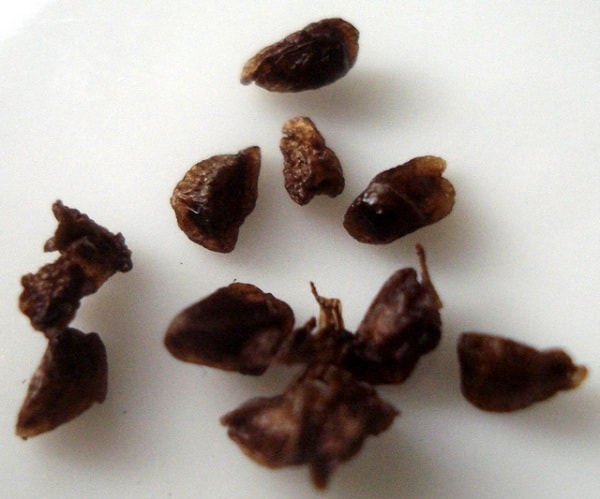
Delphinium seeds
Botanical description of the culture, precautions
Let's start the botanical description of the culture with the following fact - in fact, the delphinium is called tall larkspur. This is how the Latin name of the Delphinium elatum flower is translated. The culture is popularly called spurnik. Belongs to the genus Ranunculaceae and includes more than 450 varieties that are distributed throughout the continents of the globe. The most decorative immigrants from China and Southeast Asia. Almost all of them are potentially dangerous to human health, since absolutely all parts of the plant are poisonous.
Precautions are the same as when working with plants of their genus Aconite. They are close relatives and contain similar toxic substances.
In the garden, the field delphinium (Delphinium consolida) is often grown - an annual species, poisonous, potentially dangerous to bees, cattle and humans. When planning plantings, flowers should be placed in such a way that they never get into the feed of dairy cattle and are not in the way of honey-collecting insects.Milk from an animal that ate larkspur, and honey from a bee that collected pollen and nectar from this flower are potentially dangerous to humans. They cause acute poisoning.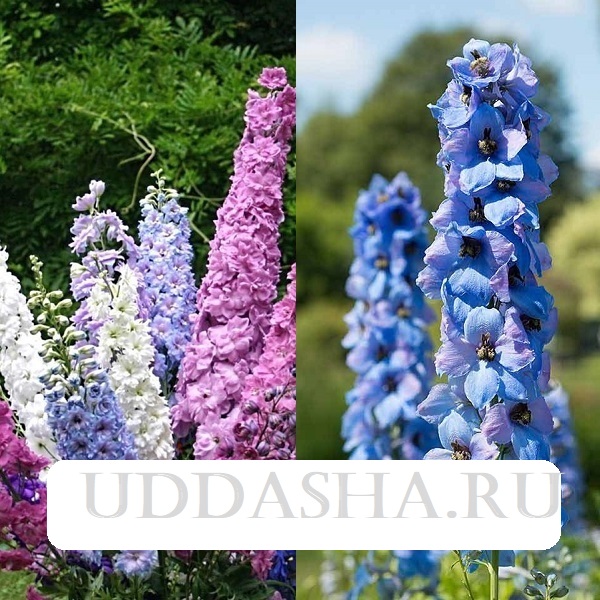
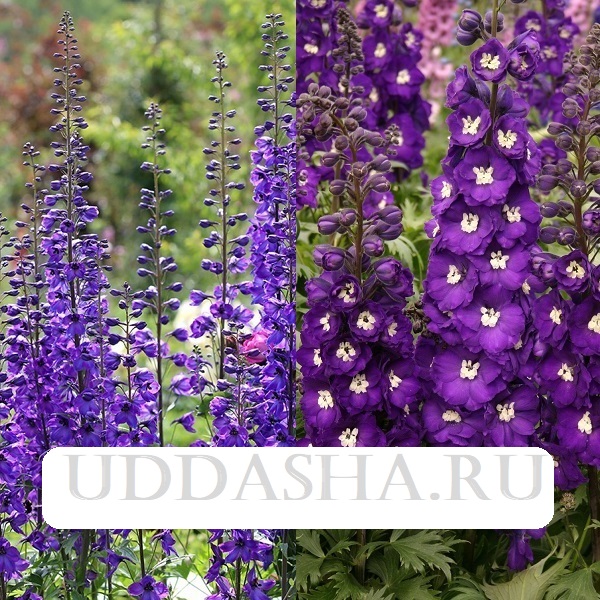
Buying and storing delphinium seeds
Before growing a delphinium, you need to buy seeds or collect them yourself in your garden. In order not to be mistaken what color delphinium will have, it is best to buy seeds in specialized stores or from gardeners-breeders who are engaged in breeding these flowers
When buying, you need to pay attention to the date when they were packed and the expiration date. The packaged delphinium has a shelf life of 11 months for annuals and 3 years for perennial delphiniums.
Store purchased and harvested seed in your flower bed, it is necessary in a place where it is cool. In a sealed foil bag, delphinium retains its viability for up to 15 years, provided they are stored in a cold place.
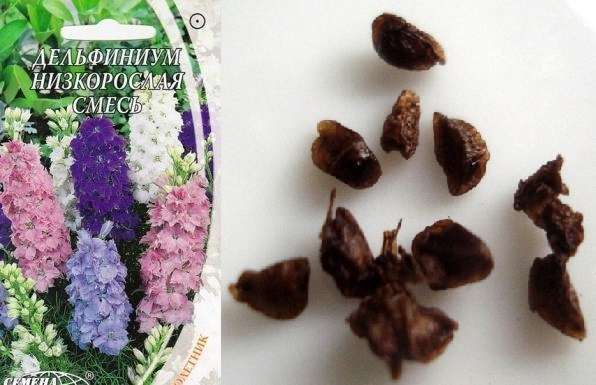
In order for the seed material of the delphinium, collected in autumn, to be preserved until planting in February - March, it is necessary:
- dry them a little and pack them in glass jars;
- hermetically cover the jars with lids and put in a cool room.
Sowing into soil
If you do not want to mess with seedlings, then you can get a new generation of delphinium from seeds by direct sowing in open ground. They spend it on seed beds, in April-May.
Before sowing seeds, prepare the soil in the selected area so that young plants have enough nutrients for active growth and they do not die from adverse weather conditions. For each square meter of soil, it is necessary to add about 100 g of wood ash, 1 tbsp. nitrophosphate and 2 kg of humus or peat. After fertilizing, the bed is dug to a depth of at least 30 cm.
 Seedlings of a delphinium sown in the ground. Blue larkspur
Seedlings of a delphinium sown in the ground. Blue larkspur
Sowing delphinium seeds is best done in shallow grooves. Before the procedure, the soil is watered abundantly. Harvested delphinium seeds are evenly and rarely laid out in the moist soil along the grooves, sprinkling them on top with a thin layer of dry substrate and gently tamping the ground with your hand so that the seeds are immersed in the moist soil. To accelerate germination, seed beds with delphinium seeds must be covered with any non-woven material or film. In order for shoots to appear after 20 or 25 days, the soil must be moistened every 2-3 days, using about 2 liters of water per square meter of area for surface wetting. The shelter can be removed only after the first shoots appear.
Throughout the summer, young delphiniums need careful care. Plants need to be watered at the slightest drought, scanty fertilizing with complex mineral fertilizers, loosen the soil and prevent the spread of weeds.
A delphinium grown in this way can be planted in a permanent place only next spring. Delphiniums will be able to bloom magnificently in the same year in which the transplantation from the seed beds was carried out.


